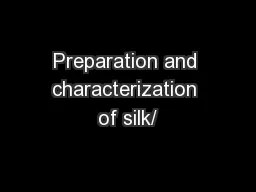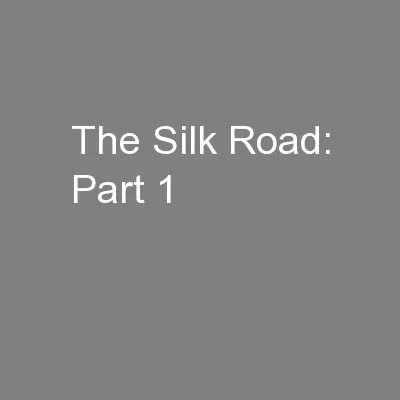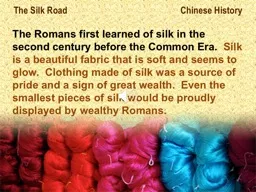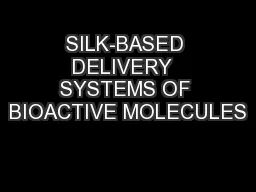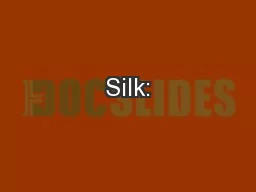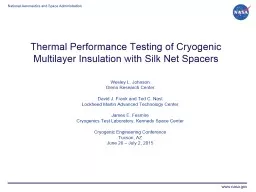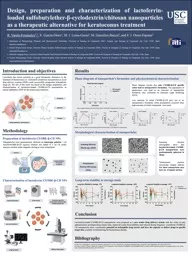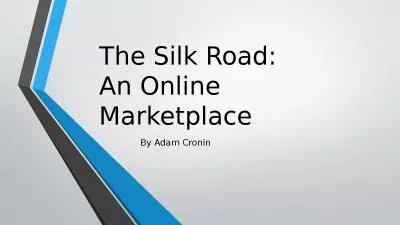PPT-Preparation and characterization of silk/
Author : lois-ondreau | Published Date : 2017-06-16
diopside composite nanofibers via electrospinning for tissue engineering applications Abbas Teimouri Department of Chemistry Payame Noor University Tehran Iran
Presentation Embed Code
Download Presentation
Download Presentation The PPT/PDF document "Preparation and characterization of silk..." is the property of its rightful owner. Permission is granted to download and print the materials on this website for personal, non-commercial use only, and to display it on your personal computer provided you do not modify the materials and that you retain all copyright notices contained in the materials. By downloading content from our website, you accept the terms of this agreement.
Preparation and characterization of silk/: Transcript
Download Rules Of Document
"Preparation and characterization of silk/"The content belongs to its owner. You may download and print it for personal use, without modification, and keep all copyright notices. By downloading, you agree to these terms.
Related Documents

